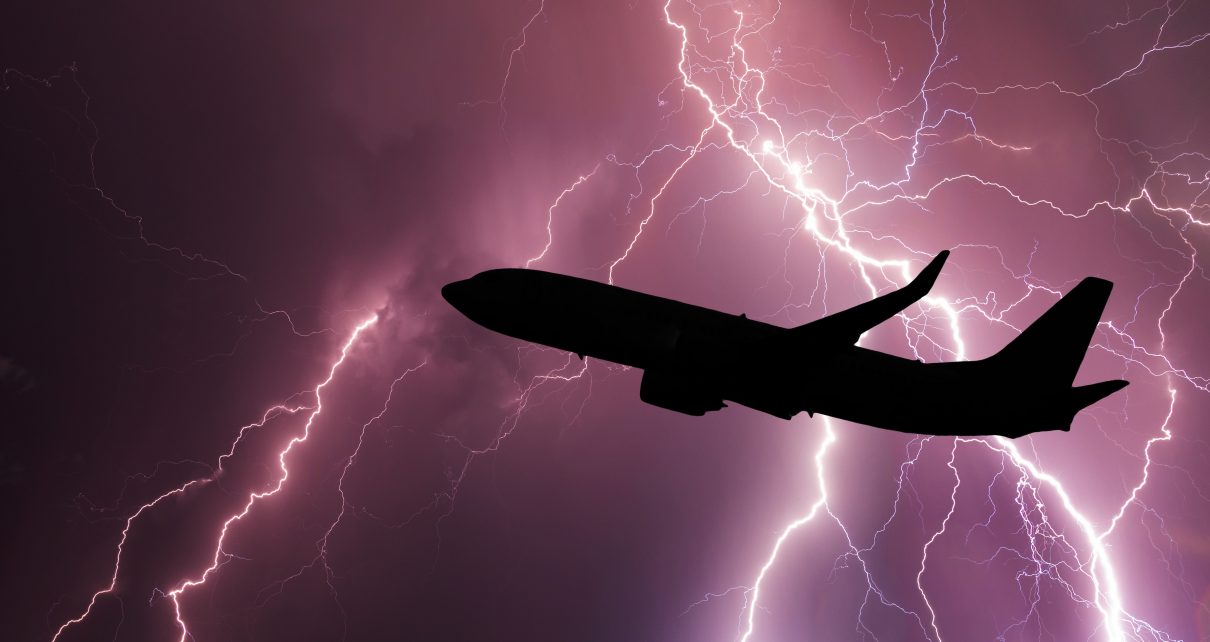If you’re in an airplane and suddenly hear a loud bang or see a flash outside the window, your plane may have just been hit by lightning. When this happens, pilots are supposed to land as soon as possible so the craft can be inspected for potential damage to its skin, structure or electronics. This protocol is paramount for safety but can create costly flight delays and cancellations. Recent tests show that, perhaps counterintuitively, the best way to reduce the chances of a strike may be to add an electrical charge to the outside of the aircraft.
During flight, positively and negatively charged particles called ions can build up on parts of an aircraft’s surface, particularly on pointed features such as the nose, tail fins and wing tips. If a large difference in charge, or polarization, develops on the plane before it flies into a charged region of the atmosphere, ions are more likely to flow along the aircraft and complete an electrical circuit with the clouds, sparking a powerful discharge—a lightning bolt. Computer simulations conducted in 2018 by Carmen Guerra-Garcia, an aerospace engineer at the Massachusetts Institute of Technology, and Colin Pavan, a graduate student in her laboratory, revealed a possible solution to ion buildup: adding negative charge to the plane.
Last year Guerra-Garcia and Pavan tested a model plane with a 10-meter-tall electric field generator and subjected it to various conditions, measuring how charges accumulated and dissipated. The data, published in January in the Journal of Geophysical Research: Atmospheres, confirmed that ion flows (or “leaders”) along the plane initiated lightning bolts—and that negatively charging the plane helped to prevent such discharges. The team is investigating how devices that pump ions onto the plane’s surface could reduce polarization.
“Charging a plane sounds crazy, but adding negative charge to prevent buildup of positive charge could help stop a leader from forming,” says Pavlo Kochkin, an aerospace engineer at the University of Bergen in Norway, who was not part of the work. In his own research, he records lightning hits on new aircraft test flights. Inspired by the M.I.T. results, he is creating a thundercloud simulator that can generate different levels of charged air and water vapor. A model plane might test how charge emitters reduce the chances of a strike.



